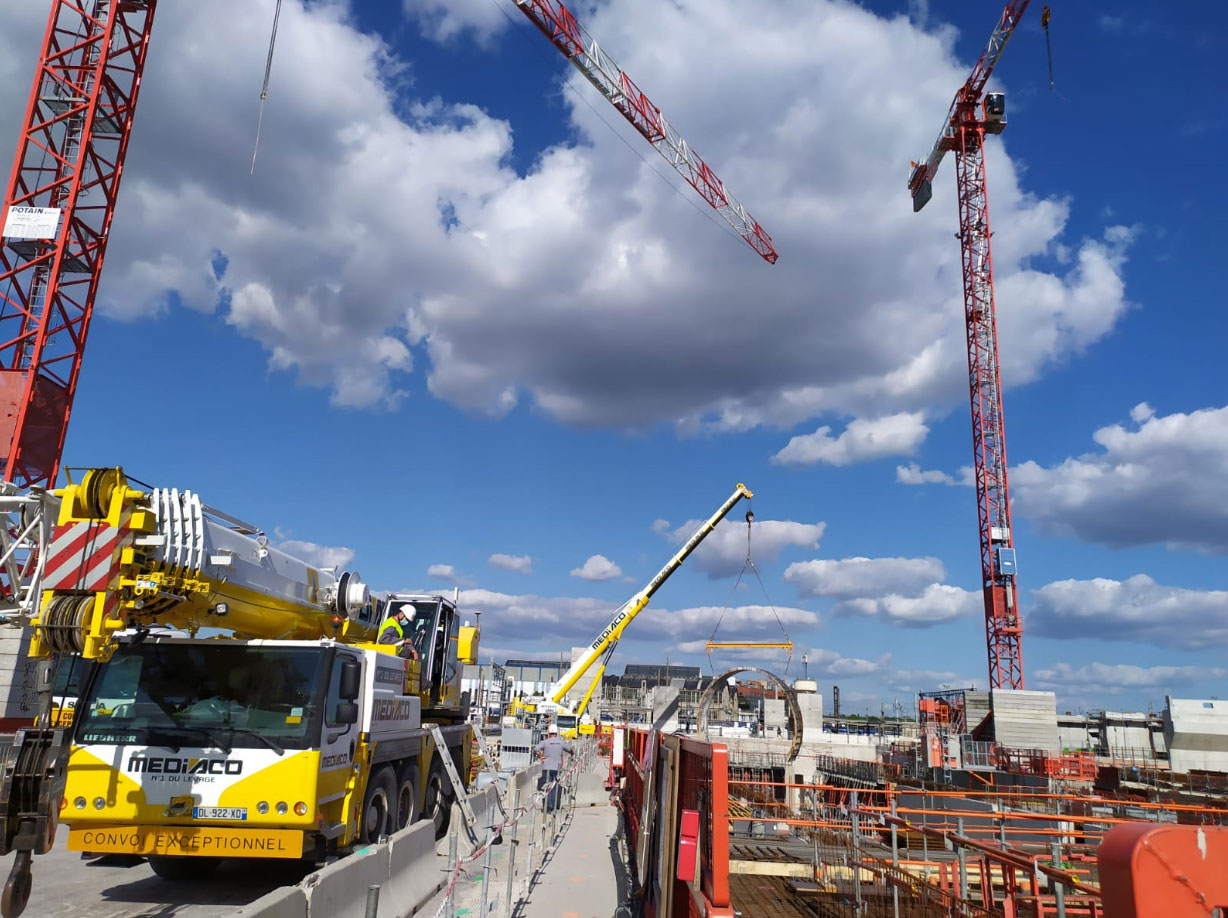By detecting the movements of machines while integrating the control of tower cranes, the DCS 61-S ensures safe working between tower and mobile cranes.
After several months of development and testing in real conditions, we unveil our anti-collision solution between tower cranes and mobile cranes available for sale in France and internationally.
This is a world first in the anti-collision world. Indeed, the anti-collision management solution is not based on the simple creation and temporary neutralization of prohibited overflight zones on the site, which only prohibits the tower cranes from working within a defined perimeter in order to allow the mobile crane to move and work freely in this area.
Instead the new functionality of the DCS 61-S automatically detects the movements of mobile machines and integrates the control of tower cranes.
The DCS 61-S are installed on both tower cranes and mobile cranes and communicate their information by radio. The system calculates in real time and in 3D the distances between each element of the cranes as well as the movement speeds in order to intervene on the control mechanisms of the machine to ensure a slowing down and then a complete immobilization of the tower crane (boom or carriage) at a pre-configured distance from the mobile machine.
In case of danger for the mobile crane, the crane operator will be warned on the screen placed in his cabin as well as by sound alerts. The coordinates of the mobile machines and the angle of slewing are obtained with precision thanks to GPS.
Tower cranes constantly know the position of each mobile machine. When mobile cranes move and reposition themselves in a different area to work, the tower crane devices automatically register their positions and thus the system creates an area of interference for the machines involved to avoid collisions.
The DCS 61-S keeps its two other essential functions for maintaining productivity and site safety.
- Zoning The system gives the user the possibility to quickly create prohibited overflight areas in 3D directly on the screen by associating geometric shapes with perimeters and static obstacles.
- Data loger The DCS 61-S continuously records and saves data related to events, movements and all crane parameters in order to view them directly on the system screen in the cabin and / or download them to a USB key.
The DCS 61-S device is an evolving product, which has been designed in such a way as to integrate new functionalities such as anti-collision management between tower cranes and mobile cranes. After many requests from professionals in the sector, the research and development department developed this long-awaited solution.
The project started in February 2018. Several phases of laboratory tests in our offices and on site with our partners have been implemented in order to offer a viable, efficient solution that meets expectations.
A few months ago, the DCS 61-S for mobile cranes was installed on the first site, Les Ardoines metro station which is located to the east of Vitry-sur-Seine, in France. On this Grand Paris Express construction site, the mobile crane as well as the two tower cranes were fitted with the DCS 61-S. This first deployment on a customer site was a real success. Another challenge was on this site, as it was interfering with another site with a tower crane and an overhead bridge crane. The solution deployed has proven successful and demonstrated its effectiveness as well as its necessity.
Indeed, to avoid the many incidents and facing the increase in the use of mobile machinery on site, the DCS 61-S responds to safety and work issues. The system adapts perfectly to immediate decision-making and daily jobsite needs while ensuring productivity and safety with a single product.
The DCS 61-S for mobile cranes is as easy as ever to install and program thanks to a screen installed in the crane operator's cabin that provides him with all the information useful for operating the machine in real time. This solution adapts perfectly to immediate decision-making and to the daily needs of construction sites thanks to the GNSS positioning system.





